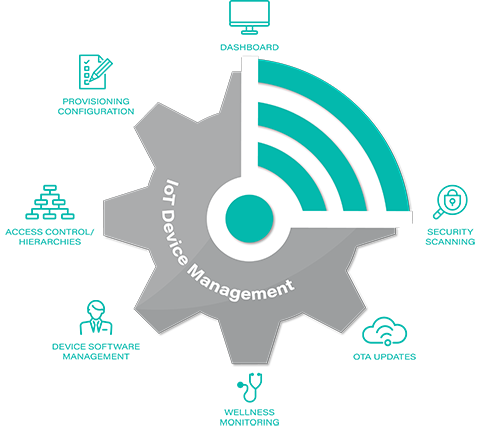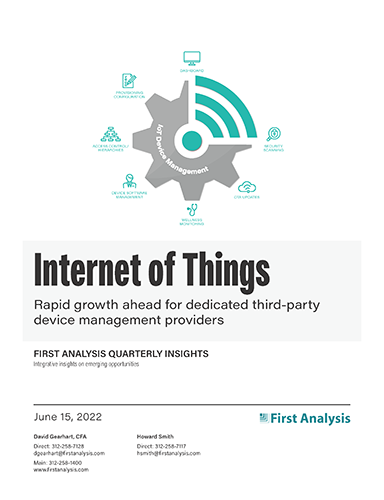Quarterly insights: Internet of Things
Rapid growth ahead for dedicated third-party device management providers

Today, most IoT companies selling proprietary hardware standalone or as part of a complete solution use internally developed software to manage their devices. This is despite the fact device management functionality is fairly standard across vendors, meaning there is little opportunity to add value or differentiate on the basis of capabilities. IoT companies could thus achieve substantial cost savings by buying this software from dedicated device management providers.
A handful of companies are now emerging to offer device management software as a service. Given the importance of device management software and the advantages of procuring the software from dedicated third-party providers, we expect these providers to see strong growth in the coming years.
We outline what device management software is, the advantages of procuring it from dedicated third parties, and why we think now is the moment for outsourced device management to see substantial adoption and growth. We also profile the leading device management software providers.
TABLE OF CONTENTS
Includes discussion of FROG and five private companies
- What is device management?
- The next frontier in outsourcing
- The opportunity is huge
- Compelling reasons for third-party device management adoption
- Base functionality overview
- Strong growth ahead for dedicated device management providers
- A critical layer in IoT
- IoT index ends one-year period near its nadir
- IoT M&A pace strengthening
- IoT private placement pace slows
What is device management?
Internet of Things (IoT) device management software, which is increasingly referred to as device ops software, is a critical component of IoT offerings, as important as core IoT hardware itself. This software enables companies that provide IoT hardware standalone or as part of a complete solution to access and manage their connected devices over networks, providing the tools to identify, configure, troubleshoot, and update devices remotely. The value of this remote access and control cannot be overstated, as the alternative would be to physically touch and connect to each device in the field. This becomes impractical and prohibitively expensive as the number of devices deployed and their geographic dispersion increase, and it becomes even more challenging when devices are physically difficult to reach due to environmental conditions or other factors. In addition, the manual alternative suffers from a lack of real-time visibility.

Request full report
To access the full report, please provide your contact information in the form below. Thank you for your interest in First Analysis research.
